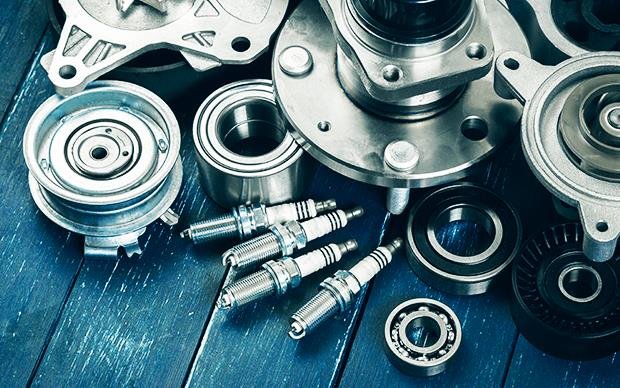The electroless nickel plating process is a sophisticated technique applied to enhance the surface quality of components in numerous industries. This method consists of laying nickel alloy as a light layer so that equipment can be more durable and resistant to rust, corrosion, and wear. This guide will comprehensively discuss the electroless nickel plating chemical technique and why it is better than electroless deposition. We’ll also dive into this method’s advantages, from creating a more uniform coating to its ability to plate on complex shapes. Furthermore, we’ll explore the many applications of electroless nickel plating, from protecting everyday items to its role in high-tech industries. Finally, we’ll look ahead to see how this process will evolve with new applications and even better properties for plated components.
Table of Contents
Understanding Electroless Nickel Plating Process
Electroless nickel plating does not use electricity and thus needs no battery or cathode. Instead, this process submerges the object with chemicals in the nickel salt bath and a reducing agent, sodium hypophosphite. This creates a chain of chemical reactions whereby a nickel-phosphorous or nickel-boron alloy coat is platted to the surface. It only takes a single nickel alloy coating to create flawless uniformity, even for the roughest parts or those with imperceptible nooks and passages. Its independence from electricity sets electroless nickel plating apart from electroplating, providing a faster, more comprehensive covering suitable for objects with a high risk of wear and tear or corrosion.
Step-by-Step Process Overview
The precise knowledge of the electroless nickel plating sequence involves the most significant implementing factor to reach satisfying effects. Whether it is the initial step of surface preparation or the final stage of post-plating treatment, each stage plays a crucial role in the pristine quality and bolsters the coated surfaces’ durability. undefined
Surface Preparation
This crucial initial step creates a supportive layer of nickel coating, ensuring a solid bond with the base material (substrate). Generally, it covers cleaning, degreasing, and for every rough surface. This, under some circumstances, may require the employment of a solvent (or any other abrasive) or the blasting (depending on the surface and the result)
Activation
Once the surface is clean, a strong interaction has to be provided between the nickel deposit and the substrate, which will be accomplished in one of the subsequent steps. In general, activation implies placing the substrate in an ammoniated solution, which provides the activator that creates an underlying surface that is reactive to the electro-deposition of nickel. This is the core part of the plating process that guarantees uniform coverage and firm adhesion of the nickel layer.
Nickel Deposition
The prepared substrate is dipped in a plating solution made of nickel ions, complexing agents, reducing agents, and buffers. Consequently, a chemical reaction occurs, and the nickel ions are converted using the catalyst as a base by converting it into the elemental nickel and then depositing it onto the substrate. The plating rate and the deposit quality can be controlled by custom-selecting the bath chemistry and adjusting operating parameters.
Post-Plating Treatment
The intended application of the coating shall determine the last stage in the process. This process often includes thorough rinsing to eliminate leftover chemicals from the plating bath. Aside from the annealing technique, more treatments like heat can be applied to get nickel’s higher hardness and wear resistance. A final sealant may even increase corrosion resistance in some situations.
Benefits Of Electroless Nickel Plating
Electroless nickel plating, one of the common forms of platin, is very popular and used in many industries because it offers many advantages. Here are some key benefits:

Enhanced Corrosion Resistance
Cor corrosion compromises metals, which reduces their strength and hinders their functioning. Electroless nickel plating is what I call the “shield” – it protects the parts from the damaging effects of rust. It helps coatings to remain functional even in the worst conditions in the field.
Improved Wear Resistance
In demanding fields like automotive and aerospace, components are constantly under assault from friction and abrasion. To combat this wear and tear, engineers rely on innovative wear-resistant coatings. Electroless nickel plating stands out as a particularly effective solution. This process creates a microscopically thin nickel layer on the component’s surface, significantly boosting its hardness. With this highly increased hardness, the wearing and tearing of the most critical parts substantially decreases. Thus, the lifetime of these parts is extended. As a reaction, electroless nickel plating has become an indispensable method for industries to provide their vehicles and aircraft with smooth running, safe, and less costly operation.
Uniform Coating Thickness
The main issue is achieving uniform coatings for anti-corrosion performance and appropriate looks. Unlike electroplating, which requires electrical energy to complete the process, electroless nickel plating gets the desired result through a chemical reaction and can be used for intricate and operable products.
Complex Geometries Coverage
A key strength of electroless nickel plating lies in its mastery of complex geometries. Unlike other methods, it effortlessly coats intricate shapes, reaching internal cavities, recesses, and sharp edges with uniform coverage. This ensures the part’s integrity and functionality are fully preserved.
The electroless nickel plating process is a versatile and valuable technique for improving components’ surface quality and durability in various applications. As technology evolves, we can expect even more innovative uses for this remarkable process. For more details, please feel free to contact us.





